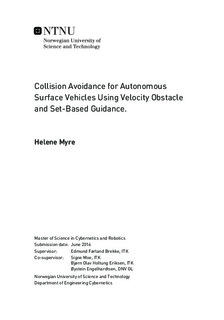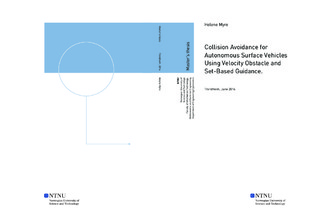| dc.description.abstract | A good and reliable collision avoidance method is essential when operating Autonomous Surface Vehicles (ASVs) at sea. But even though avoiding collisions is the most important part, making sure the ASV's evasive maneuvers makes sense to surrounding vessels, is also a vital part of a well preforming system. In order to both avoid collisions and ensure reasonable behavior, the collision avoidance method used should be implemented according to the international regulations for preventing collisions at sea, also known as COLREGs.
Set-Based Guidance is used as a way of achieving a desired behavior in a robot and can, amongst other things, also be used as a collision avoidance method. In this thesis, a collision avoidance method for dynamic obstacles based on Set-Based Guidance has been developed. The method is also compliant with the main rules of COLREGs.
In order to test the collision avoidance method, a simulator with a 3 DOF mathematical model of a vessel has been implemented together with LOS guidance and a low-level controller. Simulations were preformed with the different situations that can occur between the ASV and an obstacle: head on, overlapping and crossing, as well as with a composed scenario including more than one obstacle.
In order to benchmark the resulting method, another collision avoidance method, the Velocity Obstacle, was also implemented and simulated with the same system and situations. Both Velocity Obstacle and Set-Based Guidance have their strengths and weaknesses, but Set-Based Guidance showed a lot of potential when it came to taking substantial action during an evasive maneuver, as well as moving in straight lines, something that are both desirable behavior according the main COLREGs rules. | |

